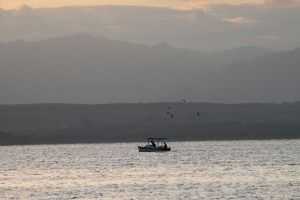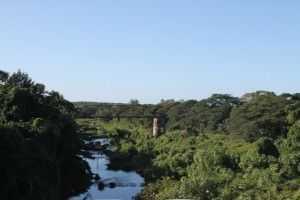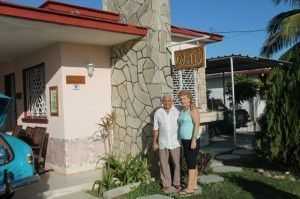“I hooked a tarpon there,” Native guide Chino brags. “It was bigger than me.”
We’re driving south, through reforested teak groves. Workmen thin the trees, hacking, making charcoal—a dirty back-breaking process. After a few days in the wilderness of the Zapata Swamp, then isolated Lake Hanabanilla, Chino is for a return to civilization. For me, the transition needs to be gradual.
Supplying the perfect dichotomy between country and city, bayside Cienfuegos is a measured dose of infusion. Often referred to as “the pearl of the south,” this port city is a perfect mixture of culture, scenic beauty and landside angling.
Founded by the French, Cienfuegos’s extra wide streets and spacious parks give it a small town charm. The large bay provides plenty of shore side fishing opportunities, most popular—tarpon and snook.
Chino and I settled into a nice “Casa Paticular” a block off the water. Our hosts, eighty year old retired M.D., Armando, and his lifelong beauty queen wife welcome us with typical Cuban warmth.
“Do you like rum?” Chino and I were relaxing on the shaded patio.
Doc chuckled and filled a glass with ice. “Every Cuban likes rum.”
I poured the man a stiff shot. “How about fishing?”
“Si, mucho.” He extended an arm and mimicked firing a speargun. “But, with hook and line, no.”
Although he no longer spearfishes, Doc is still tight lipped about his secrets, only after a couple of Cubra Libras and an assurance the story would not be repeated around town, he shares.

“During the `special period` citizens of Cienfuegos ate a lot of tarpon,” Doc explains.
“They beat the fish with a baseball bat, then cut off the tail. After laying a board lengthways over the fish, a car was driven slowly across the board, squeezing the bony red meat out of the chopped off rear end. Strained of bone, the meat was dried and cooked as fish cakes.
“We ate very little of it,” Doc adds, and then makes a face indicating his distaste for tarpon. “We had the rebalo, the snook.”

“I still get fish. I passed my gun to my grandson. When not in school, he is in the water,” Doc brags, proud.
Doc will leave mid-morning after seeing us off. He spends a few hours each day attending to children in the hospital up the road.
Next stop: On the beach in one of Cuba’s oldest cities. For more information about fishing in Cuba, visit: www.captphilthompson.com, or Email: philkeywest@yahoo.com
[easy-social-share]

